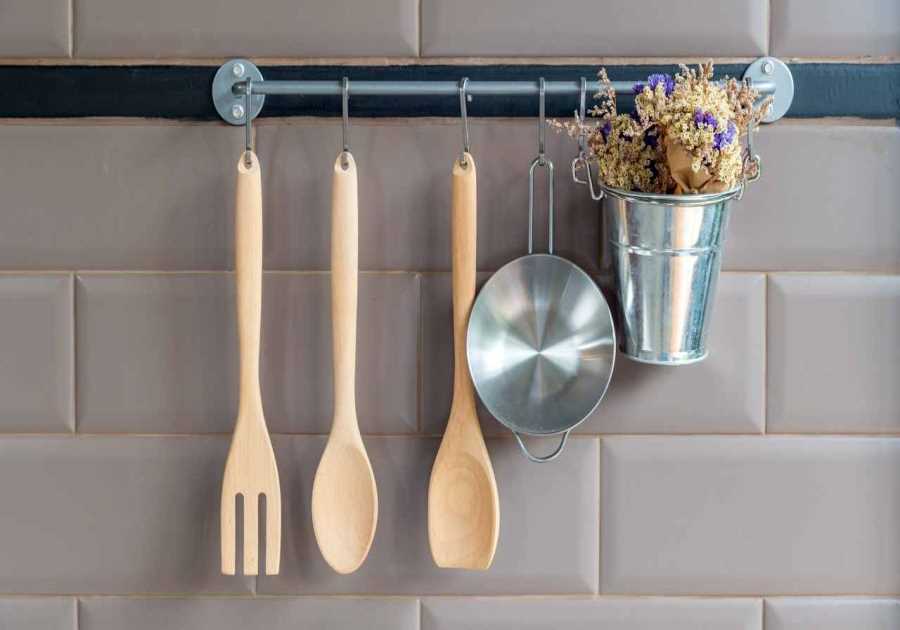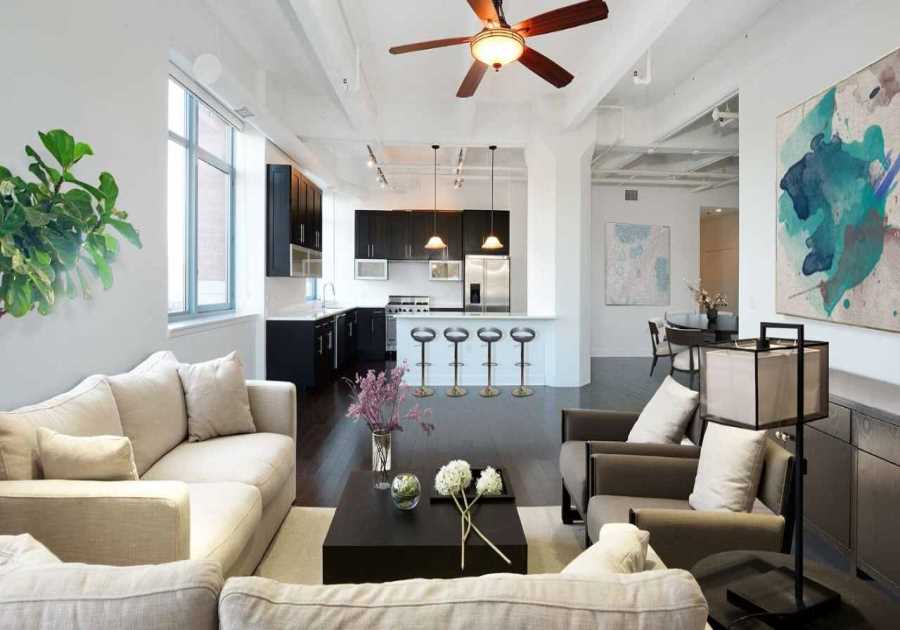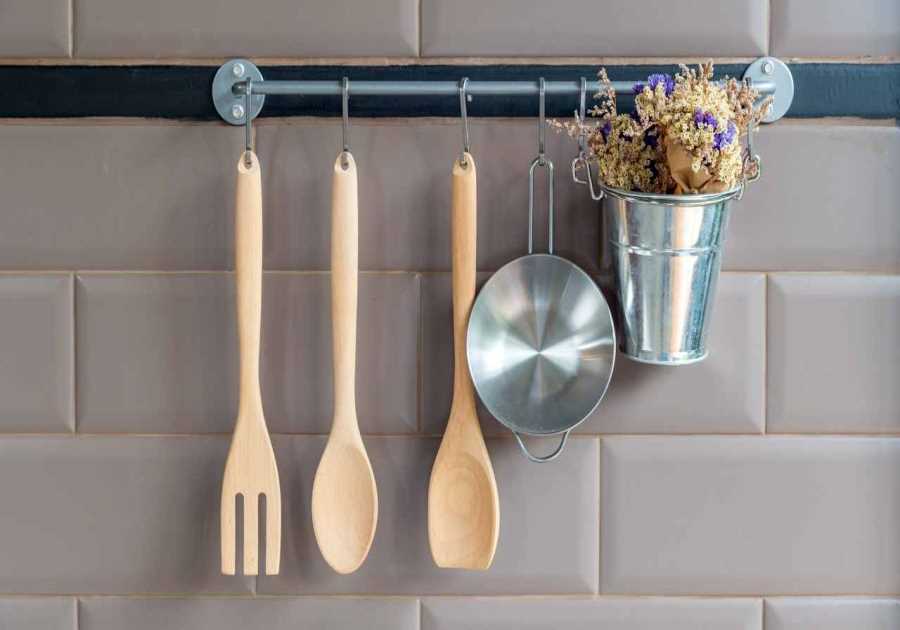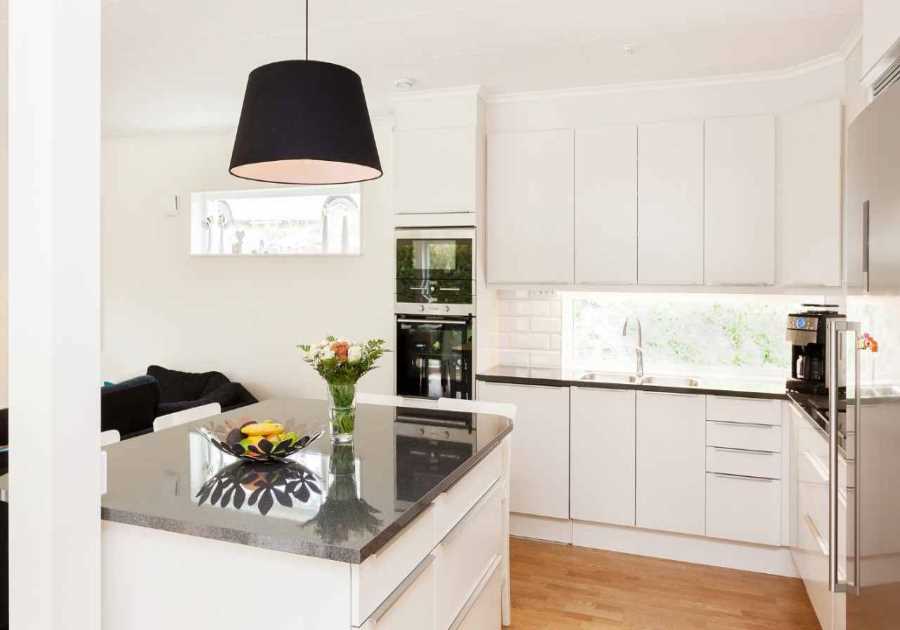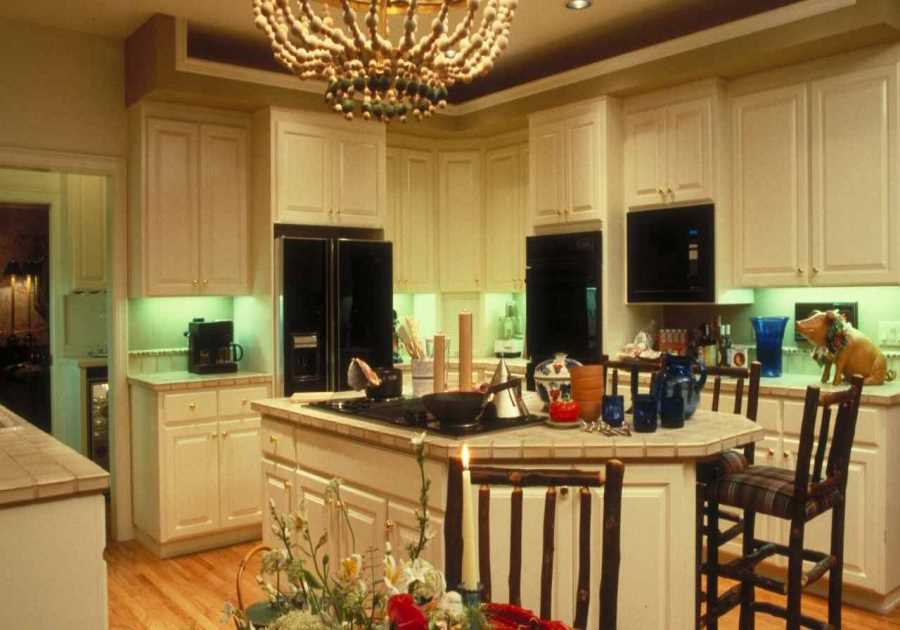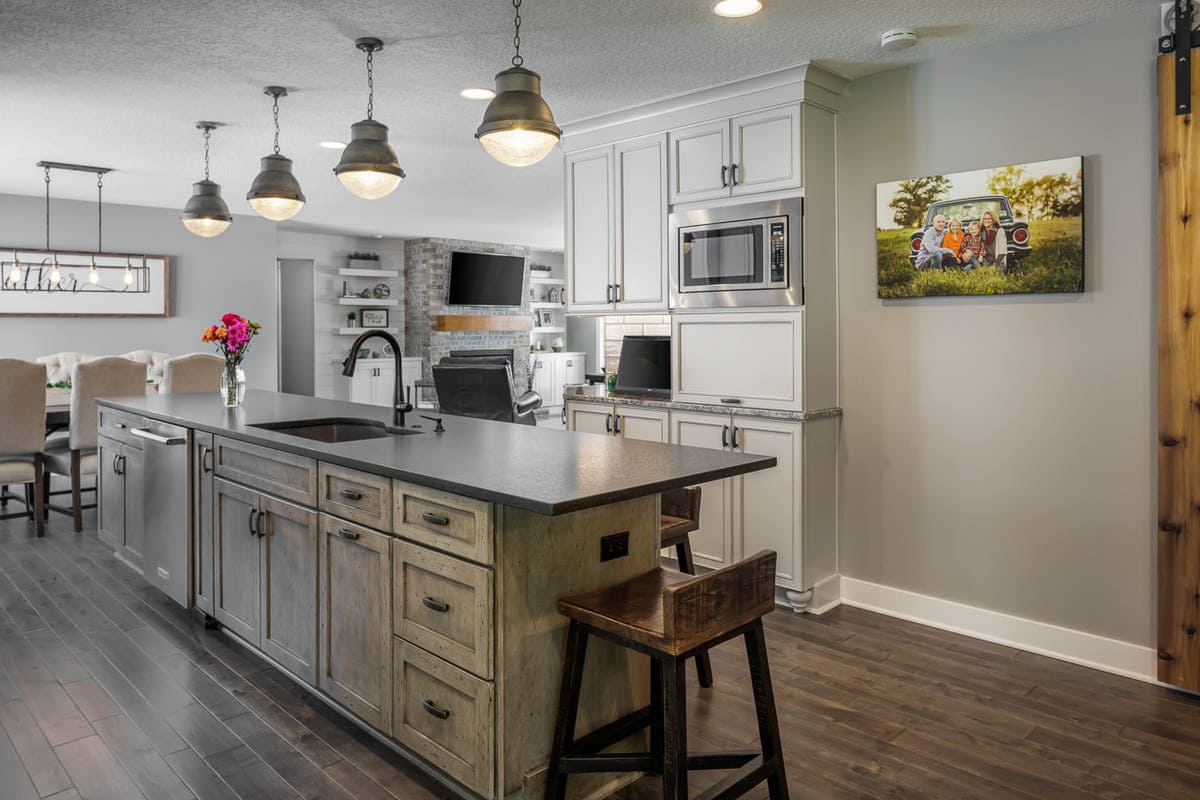
Which Is Better to Have: an Open Concept Kitchen Or a Closed One?
Considering both styles is not just an aesthetic choice but affects user experience, entertainment and cost.
Let's examine the advantages of each one so you can make the best decision for your kitchen needs.
For starters, when you walk into an open-concept kitchen, you feel immediately enveloped in the energy of cooking and socializing. Its all-in-one design allows for a smooth transition between multiple function zones like eating, chatting or prepping.
Plus, it can make for a stunning visual impact connecting two or more areas with comfort and ease when designed properly.
On the other hand, isolated kitchens can provide much-needed privacy for entertaining guests or family members who prefer to eat meals separately from those cooking them. In addition, it also acts as insulation to keep noise levels down while preventing distractions during meal preparation solely meant for intimate moments amongst family members only.
Both types have their respective merits depending on individual tastes and lifestyle habits. For example, closed kitchen owners may eventually wish they installed shelves or windows to have some breakage in their linoleum walling structure. At the same time, open-concept followers may opt in the future to feature unique designs such as adding a separate bar area.
Whatever your specific style preference, don't miss out on either! Understanding both concepts will ensure you pick the right style to optimize performance based on your needs with minimal mistakes along the way.
Closed versus open layout
The choice between an open versus closed kitchen layout is a personal decision. Depending on your preferences and the size of your home, you may prefer one over the other. Regardless, it is a good idea to research the advantages and disadvantages of each.
An open kitchen is a popular concept in contemporary home designs. It adds an illusion of space in small apartments. Open kitchen concepts also provide a sense of warmth and light.
Closed kitchens are a more traditional style. They offer privacy but are not ideal for homes with small rooms. In addition, they can be a claustrophobic spaces. Generally, they have four walls, and most have a serving window.
An open kitchen offers the opportunity to add an island in the middle. This provides additional storage space. Some even have shelves in the dividing wall. If you choose an open kitchen, you may have a harder time coordinating the cleaning and organization of your space.
An open kitchen is more of a social space. In an open kitchen, cooking and other activities can affect the room's ambiance. For instance, if you have noisy appliances, you may not want your family members to be able to hear you working.
Drawbacks of open-concept kitchens
Open-concept kitchens can be a great way to improve your home's appeal. However, there are many pros and cons to consider. The pros include more space, better communication, and the ability to serve more people. Unfortunately, the downsides include less privacy, increased noise, and smaller storage.
Open-concept kitchens are a smart move for people who entertain a lot. Not only does it allow hosts to bring plates directly from the kitchen to the dining table, but it also increases the accessibility of the space.
While open-concept kitchens may have a few other advantages, such as a free-standing fireplace, they also have a few drawbacks. For starters, it's challenging to maintain airflow in an open-concept kitchen.
Open-concept kitchens are also loud. They require more cleaning than conventional kitchens. Additionally, they can spread smells and smoke. Getting protective barriers installed along entryways or in the kitchen is a good idea.
On the other hand, an open-concept design may also be expensive. It's not cheap to replace walls or add square footage, especially if you want a more cohesive design.
Open-concept kitchens are an important part of a modern home. However, they're not the best option if you're looking to save money.
Frequently Asked Questions
Are you able to DIY a Kitchen Renovation?
Do you want to renovate your kitchen? Yes, it is possible. But there are some important things to keep in your mind.
A kitchen renovation is a large project. Make sure you have enough time and energy to complete it. It is also important to know basic plumbing and carpentry before you begin. Also, you will need to decide what aspects of your kitchen to be changed, such as extra storage space, changing old appliances, or changing the lighting.
Now it's time for you to begin shopping for kitchen materials. You will need to make a decision about cabinets, countertops, flooring and appliances.
It is a good idea to plan your kitchen layout before you shop. This will help you decide how much space your kitchen needs and what type layout would work best.
You have many options for cabinets. There are two options when it comes to cabinets: ready-to-assemble cabinets (RTA) or custom cabinets. RTA cabinets can be made in many styles and colors and are generally less expensive than custom ones.
Before undertaking a large-scale renovation, it's essential to make sure you have taken all necessary steps to ensure safety and security. For example, you might want to check the local building codes for renovations.
It is tempting to try to complete a large-scale remodel on your own. But it is better to get professional assistance. You can save time and money by hiring a professional contractor. A professional can help you ensure that your project runs smoothly.
How to Reduce Kitchen Remodeling Costs
Here are some tips to help you save money when remodeling your kitchen.
Do your research.
Research is the first step in any kitchen remodel. This will help you get a clear picture of the final outcome you are looking for in your kitchen remodel. Also, research can help you to identify cost-saving opportunities.
Create your budget.
Once you have a clear picture of your kitchen remodel goals, it is time for you to create a budget. This will help you decide how much money to spend on the job. You must also stick to your budget in order to avoid going overboard.
Shop around for deals and discounts.
Look for bargains and savings when you shop for materials or appliances. This will help you save money on your kitchen remodel costs.
Find a reliable contractor.
You should look for a contractor who is trustworthy and has a track record. Reputable contractors can deliver quality work at a fair price.
You can do the work.
You might be able do the work yourself, if you have the skills. You will save money and feel satisfied knowing you did the work yourself.
These tips will help you save money on kitchen remodeling costs.
In the kitchen, where should a refrigerator go?
The refrigerator should be placed between the stovetop/sink. It should be placed close to your cupboards so that you can get what you need quickly.
***
Planning permission is required for your new kitchen.
Electrical and plumbing permits are required for any changes to the electrical or plumbing locations. If you are making structural changes to your walls, you may need to apply to a building permit.
It's always best for you to verify with your local authority if you are unsure if you require planning permission before you start any work.
Statistics
- Experts also recommend setting aside 20 percent of your budget for surprises, including unpleasant demolition discoveries. One is water damage, the electricity that is not up to code, or other budget-spiking gotchas. (hgtv.com)
- Your most significant cost investment for a kitchen remodel will usually be cabinets, typically comprising 25 percent of your budget. (hgtv.com)
- Keep 10 to 25 percent of List 2, depending on the budget. (familyhandyman.com)
- According to Burgin, some hinges have this feature built-in, but it's an add-on cost for other models of about $5 retail, adding up to $350 to $500 for an entire kitchen, depending on size. (hgtv.com)
- In large firms, the commission charged by the GC ranges from 15 to 25 percent of the total job cost. (thespruce.com)
External Links
thespruce.com
houzz.com
remodeling.hw.net
familyhandyman.com
- Do's and Don'ts: A First DIY Subway tile Backsplash Installation by Family Handyman
- Create an Open, Craftsman-Style Kitchen (DIY)
How To
Here are the 8 Basic Steps of Kitchen Remodeling for Beginners:
This is how to begin a DFY Project for Beginners.
- There are three basic steps involved when remodeling your kitchen. The first step is to decide if you want to completely renovate your kitchen or replace existing fixtures and appliances. Second, choose the type of kitchen that best suits you and your lifestyle. The third option is to hire professionals or do it yourself.
- The next step is deciding what kind of kitchen you want to install. Do you want a traditional, open-plan kitchen with cabinets countertops and appliances or a modern one? Perhaps you prefer modern designs that have minimal storage and sleek lines. Do you have an idea for a large island or a breakfast nook? The final step is to hire a professional to complete the installation.
- Although the kitchen is the heart and soul of every home it is often overwhelming for homeowners because of the many decisions that they have to make before they begin their project. Fortunately, there are some easy ways to get started.
- Decide if You Want to Renovate or Replace - The first step is to determine whether you want to complete a kitchen renovation or replace some of the appliances and fixtures. You'll need to calculate the cost of demolition and new cabinets, countertops and flooring if you intend to renovate the space.
- Calculate Your Budget – The first thing to do is determine how much you are able to spend on your kitchen remodeling project. This includes everything from the cost of labor and supplies to the amount you can afford.
- Choose Your Layout - Once you've determined how much you can spend, the next step is deciding where you would like to place your new kitchen. There are many layouts to choose from, including open, peninsula, galley or corner. Each layout comes with its pros and disadvantages, so make sure you choose the one that is most suitable for your needs.
- Choose Your Materials - Now it's time to choose your materials. This covers everything, from countertops and cabinets to flooring and lighting. There are many options, so it's important to research the best materials for your needs.
- Hire Professionals - Finally, once you've selected your materials, you'll want to find a professional specializing in kitchen construction. A reliable contractor will make sure that everything runs smoothly, right from design to installation. A good contractor will also offer follow-up services so that you don't have any worries during the installation process.
- Enjoy! - You've made it to the final stage of the kitchen remodeling process--enjoyment! You won't mind spending hours in your new kitchen cooking delicious meals if you love it. If you are still not sure, take the time to test out your new kitchen. It will give you an idea of the value of your remodel.
.png)
